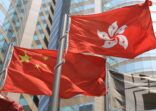Although there are nearly 370 issuers globally, three players – Blackrock’s iShares, Vanguard, and State Street’s SPDR business – manage nearly 70% of ETF assets globally, according to Deborah Fuhr, London-based managing partner at ETF research and consulting firm ETFGI.
“There are 7,553 ETFs globally, but only 670 ETFs have assets over $1bn, [and these] account for 80% of all the assets,” she said during the firm’s ETF Global Markets Roundtable event in Hong Kong this week.
The market concentration is especially true in Hong Kong, where only 26 out of the 111 products have assets of $100m or more, according to data from the Hong Kong Exchange. Further, those 26 ETFs account for 96% of Hong Kong’s $41bn ETF market.
However, Fuhr believes there is still room for smaller players to compete.
“You don’t have to be in the top 20 to be successful, we’ve seen firms come to market with one ETF and have been lucky because someone had a good idea,” she said.
For example, thematic ETFs are starting to become very popular for many investors globally. In Europe, investors are also starting to look at ETFs that incorporate ESG in the investment process, she added.
Fuhr said that she also believes smart beta products are gaining more traction, with a third of their assets coming from ETFs that have high dividends as a factor.
“But people who buy that aren’t buying it because it’s smart beta,” she noted. “They are buying it because they want something that is going to give them more income.”
Be different
Players launching new ETF products have to make sure their products are different from what is already available in the market.
“In gaining traction, it is hard to be a ‘me too’ player, even if you offer lower costs, because it’s hard to get people to switch,” Fuhr said.
Echoing Fuhr, Rebecca Sin, head of ETF sales trading for Asia at Commerzbank, said in a separate panel discussion that smaller ETF players can be successful in a very consolidated market.
“You have more sector-specific or ETF issuers that really create unique products that cater to investors. In Asia, there is also sufficient demand to invest in different products, so there is still a lot of growth potential in the region,” she said.
An example is Premia Partners, which launched the first Asean-focused ETF in Hong Kong in August. The product has gathered $36m of assets to date, according to data from Hong Kong Exchange. Premia Partners is relatively new in the market, first launching its two China-focused smart beta ETFs in October last year.
Sin added that competing in Asia is slightly easier than in the US. “What a lot of issuers forget is that in Asia, you don’t have the fee compression that you have in the US. So in the US, you have people fighting for management fees, so you see fees coming down. In Asia, investors are happy to pay trading commissions in double digits. The first thing they look at is not management fees but liquidity.”
But challenges still remain in Asia’s ETF market. It remains an institutional market, partly because distribution models are predominantly commission-based.
In addition, investors in the region, particularly in Hong Kong, have a home-market bias. Despite the existence of regional and single-country ETFs that focus on Asia-Pacific, Europe and the US, Hong Kong- and China-focused ETFs account for 75% of Hong Kong’s ETF market.
As of August, the top 10 most actively-traded ETFs were focused on the Hong Kong and China markets, with five of them being leveraged and inverse products, according to latest data from the Hong Kong Exchange.


















